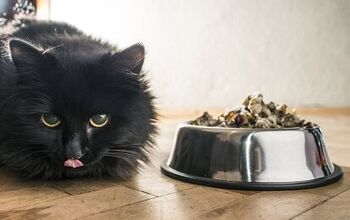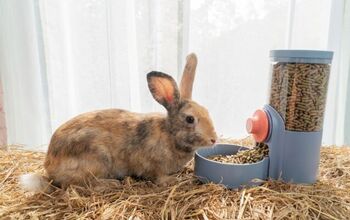Ups and Downs: Understanding Feline Diabetes

Feline diabetes mellitus, which is also referred to as sugar diabetes, occurs when your pet’s body is unable to produce or utilize insulin properly. The disease is divided into non-insulin-dependent diabetes mellitus and insulin-dependent diabetes mellitus.
Understanding this feline disease, including what its typical causes and symptoms are, can help you take steps to potentially prevent it from occurring, as well as get your cat treatment right away in the event that symptoms arise.
How Insulin Works in the Body
Insulin, which is a hormone that’s made by the pancreas, is used to regulate the movement of glucose from your cat’s blood to the cells throughout his body that need it.
Related: How a Cat Exercise Wheel Can Fight Obesity
If insulin is ineffective or deficient, you kitty’s body will begin breaking down protein and fat in order to access alternative sources of energy. Your cat will end up consuming more food but will end up losing weight despite his appetite. This also results in high sugar levels in the blood, which your cat will eliminate through the urine, leading to excessive thirst and urination.
Most Common Symptoms
There are four typical symptoms that are associated with diabetes mellitus. If you notice your cat exhibiting these signs, a trip to the vet is necessary to receive a proper diagnosis and begin treatment right away.
- Increased appetite
- Weight loss
- Increased thirst
- Increased urination
If you don’t give your diabetic cat the treatment that he needs, the disease will shorten his life. It may also result in ketoacidosis, which is dangerous and sometimes fatal.
Related: How Much Should I Feed My Cat?
Untreated diabetes may also lead to liver disease, secondary bacterial infections, and unhealthy coat and skin. And diabetic neuropathy might cause your kitty to get progressively weaker, particularly in his hind legs, resulting in an inability to walk or jump properly.
Causes of Diabetes Mellitus in Cats
Diabetes mellitus occurs most often in obese, older felines, and male kitties are also more commonly affected. However, it can affect any cat.
Even though the exact cause isn’t known, there are several factors that can contribute to its development. These include:
- Chronic pancreatitis
- Hormonal ailments, such as Cushing’s disease, acromegaly, and hyperthyroidism
- Some medications, such as corticosteroids and megestrol acetate
- Obesity
Treatments for Diabetes Mellitus
Every cat is unique, so your vet will need to thoroughly examine your pet to determine the best treatment for his diabetes. Some kitties are easier to treat than others, and some may need treatment for the rest of their lives.
Treatment options for cats with diabetes include daily insulin injections, oral medications, and dietary changes.
In addition to giving your cat the appropriate treatment as prescribed by your vet, you should also provide your pet with a stress-free environment and a consistent feeding schedule. You can discuss feeding options with your vet, particularly if it is recommended that your cat lose weight.
Closely monitoring your cat’s condition with the help of regular vet visits is also important. This will help avoid complications, such as hypoglycemia (low blood sugar), and it will ensure your cat is getting the right treatment for his particular condition.
Although there is no cure for this disease, some kitties who are diabetic might end up losing their need for insulin after a period of time, such as months or years, particularly if the disease is the result of being obese. If your cat’s weight is brought under control, his diabetes may improve quite a bit or even go into remission.
When provided with the right veterinary care, home treatment, and diet, diabetic cats can be successfully managed and they could live for many years. Keeping your cat’s weight under control throughout his life and feeding him a diet that your vet recommends may help prevent the disease. But even if your cat develops diabetes, if you’re dedicated and you work closely with your vet, you can achieve positive results.

Lisa Selvaggio is a freelance writer and editor, and our resident cats-pert, with certifications in pet nutrition and pet first aid. She enjoys producing content that helps people understand animals better so they can give their pets a safe and happy home.
More by Lisa Selvaggio























